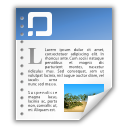| dc.description.abstract | My comprehensive essay will address the beneficial use of primary sources in history instruction for upper elementary grades. History textbooks emphasize breadth over depth, generalizations of historical events, and specific names and dates making history seem remote and irrelevant to students of this age. Primary source based history instruction allows students to delve deeply into a topic and to have authentic, learning experiences that elicit critical thinking and questioning. My essay will address problems with traditional textbook-based methods for history instruction in upper elementary grades. History curriculum for this age is limited to textbook sources, which emphasize factual information and leave little room for critical thinking. Students gain little from this kind of instruction. An alternative to textbook-based history instruction is the use of primary sources to provoke meaningful experiences, discussions and critical thinking among students. Primary sources are the original materials created by the participants or witnesses of past events. These materials include letters, reports, photographs, drawings, diaries, artifacts, newspapers, magazines, and other such items that represent an authentic historical perspective. Secondary sources report, summarize, interpret, or analyze primary source information. Since primary sources come from the historical period of study, they offer unique perspectives on historical events. These original perspectives are valuable for historical instruction because they naturally invite inquiry, debate, and reflection by those who study them. Primary sources help students develop their own opinions about the past instead of relying on textbooks to do it for them. Primary sources encourage critical thinking, healthy skepticism of information, bias, audience and perspective awareness, and underscore the importance of using multiple reference resources. These thinking and research skills, as opposed to memorization, approximate the methods real historians use. Assessment of a history curriculum based in primary source material must change from traditional exams that only assess whether students can regurgitate information. Performance-based assessments are authentic assessments that require students to synthesize the skills and information used throughout a unit of study in a real-world context. The purpose of history instruction for upper elementary students is to help students to think and reflect on the past and to apply that knowledge to make the future better. A primary source and inquiry based curriculum helps students achieve this goal. | en |

